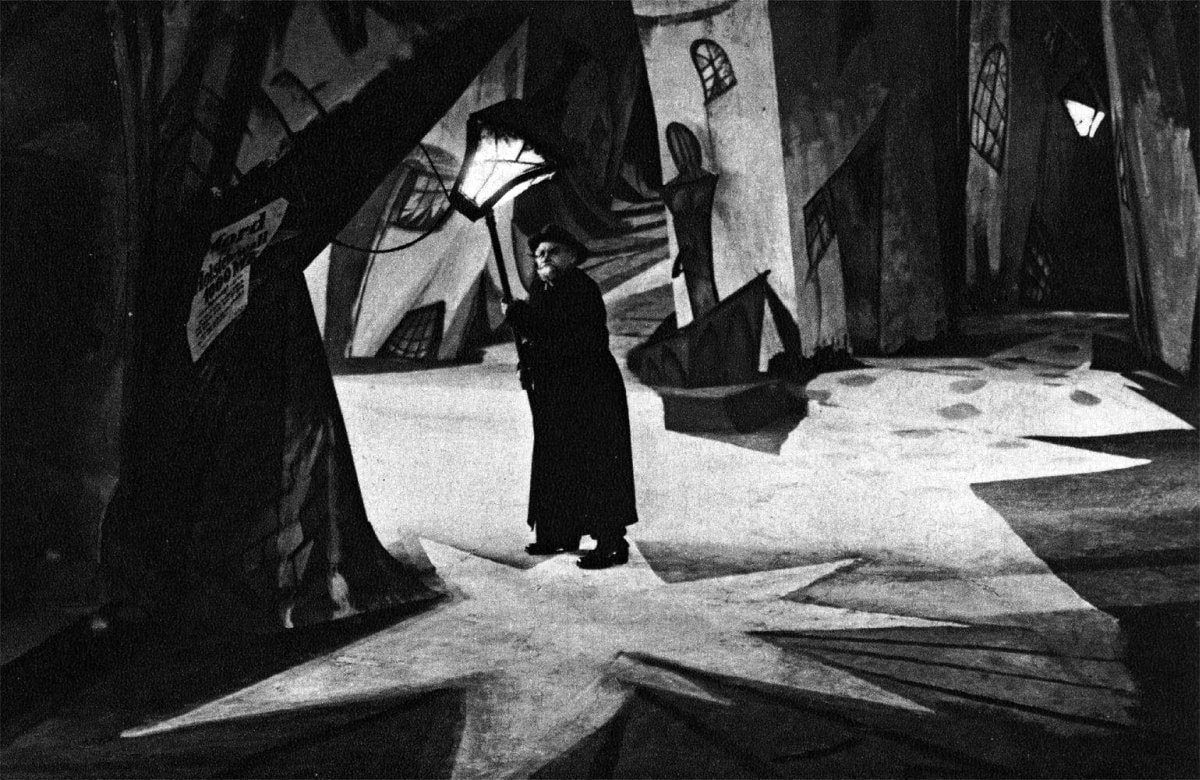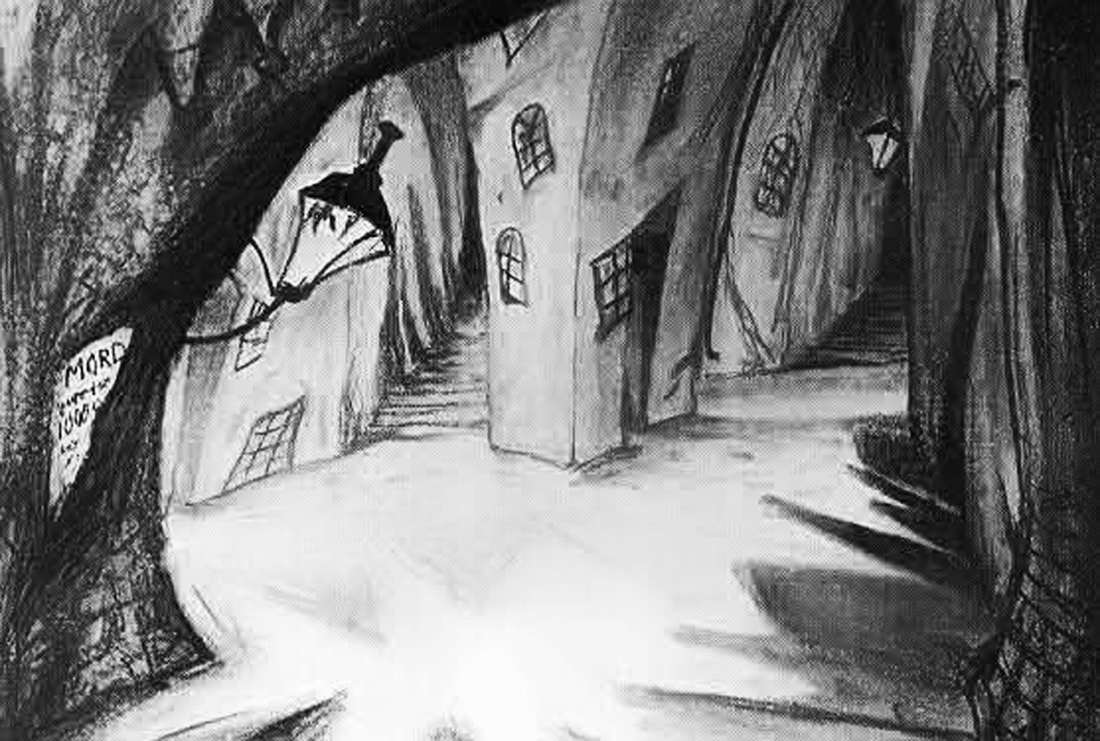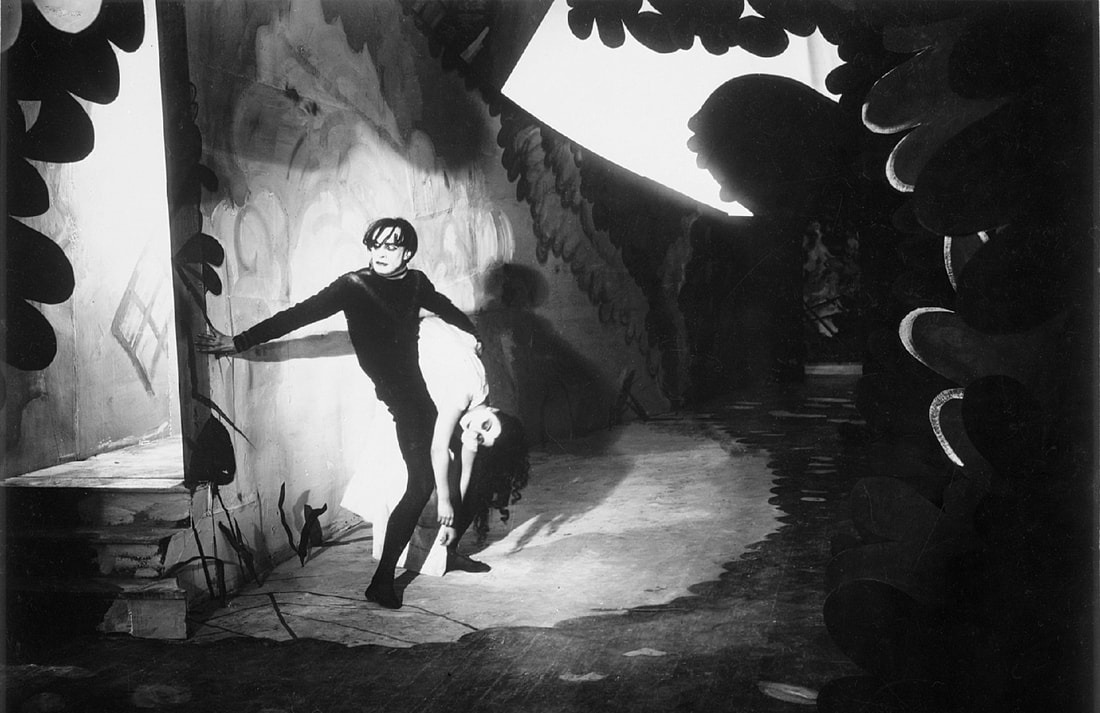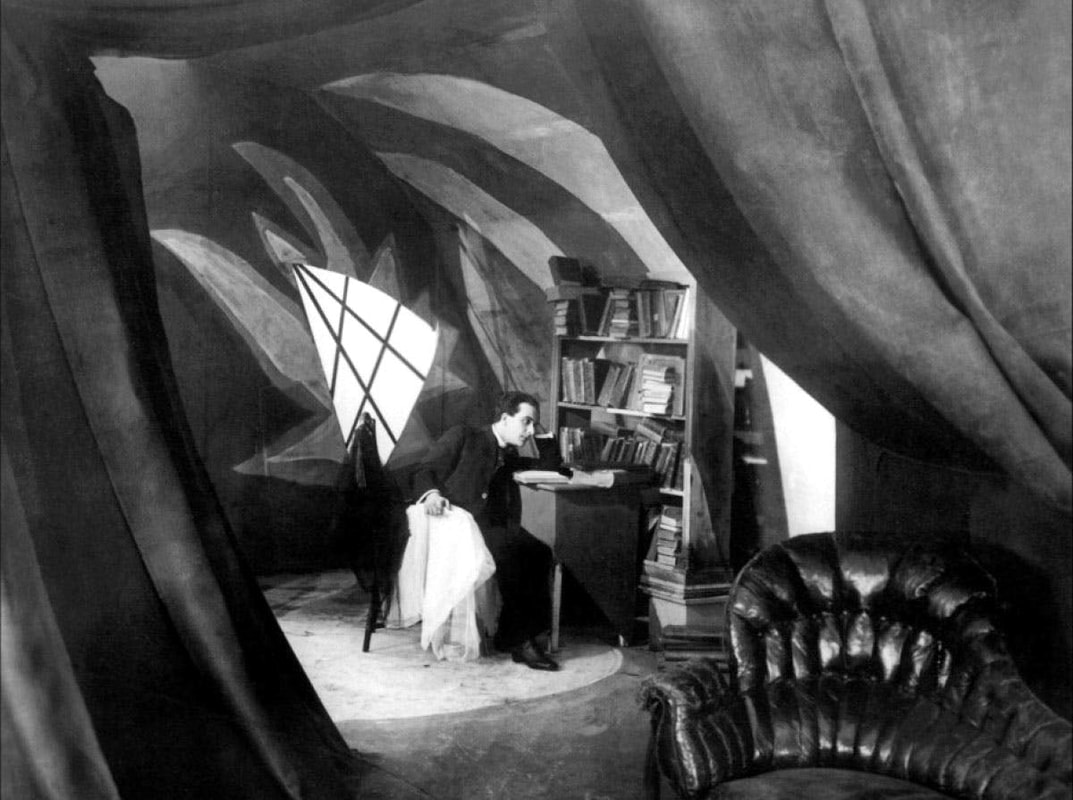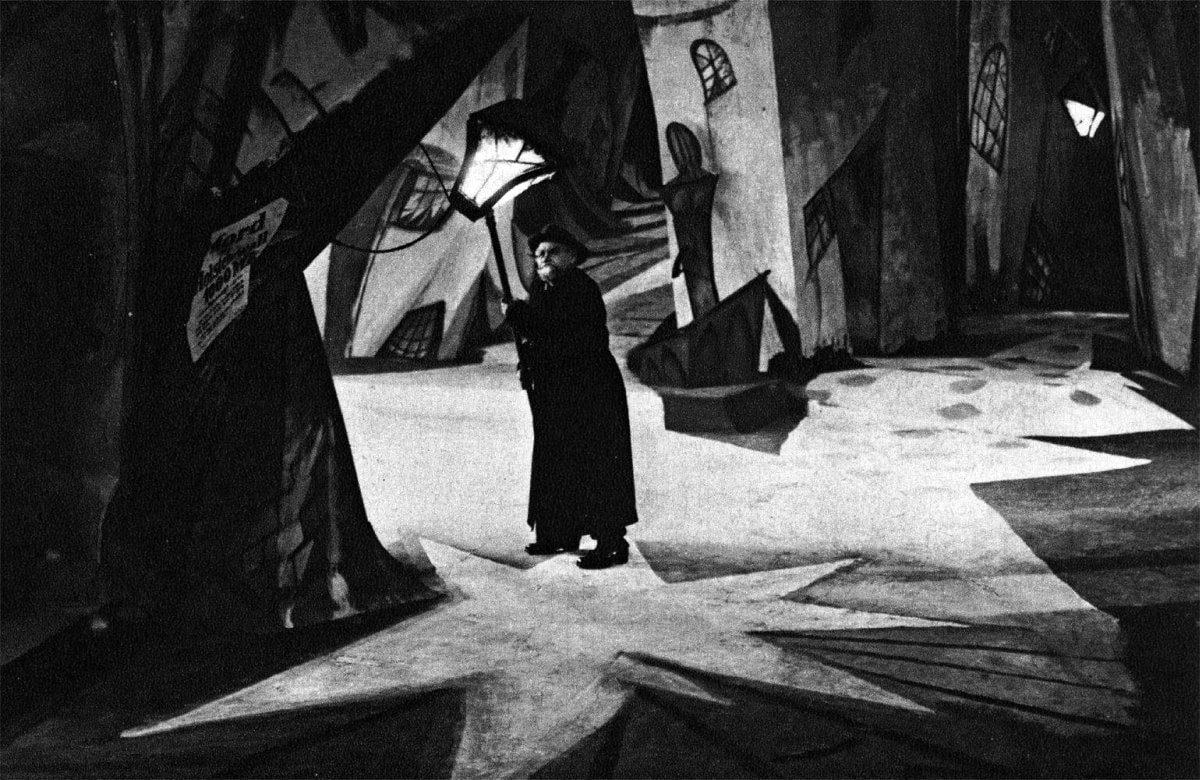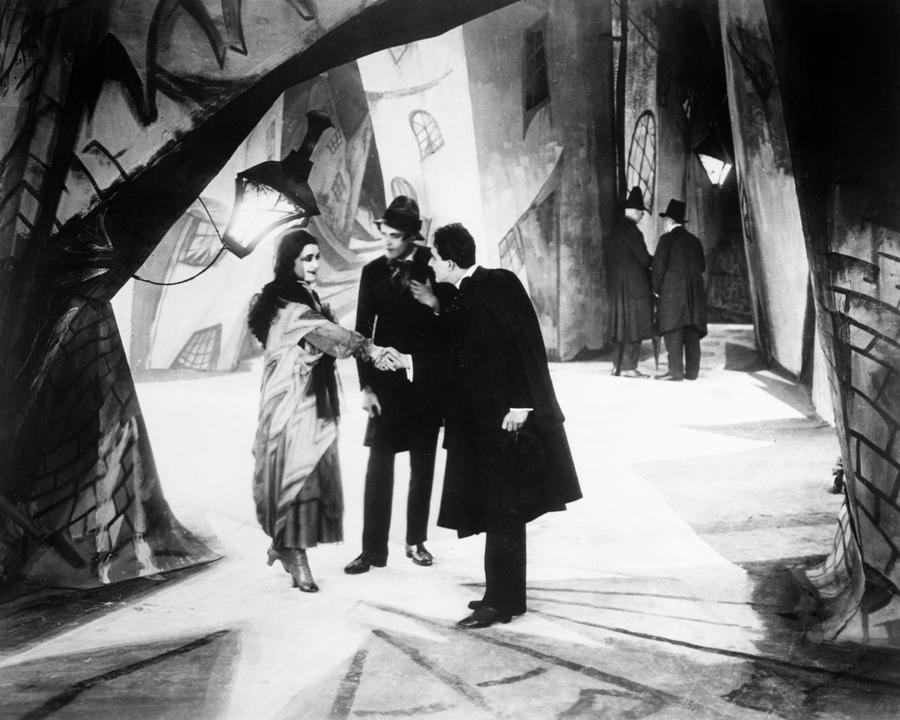Last night we watched (again) the classic and Expressionist film The Cabinet of Dr. Caligari. In design, German Expressionism marked time of fantasy, dream, radical and pacifistic reaction to the devastation of WWI. It manifested in fantastic buildings of sharp-pointed forms, cave-like structures, and glass towers, most of which remained unrealized, yet, those built, have become super influential for generations of architects. Perhaps the most successful realization of German Expressionist design was the cinema, while the quintessential example is ‘The Cabinet of Dr. Caligari,’ a 1920 silent horror film, directed by Robert Wiene. The setting of the film was designed in the striking style of Expressionism, with dramatic angles; graphic style; shadows against bright light; distortions in perspective and forms; bizarre and chaotic appearances; trees that look as sharp as knives; buildings clustered in cubistic compositions. The script was inspired by the experiences during World War, and the dark design perfectly accommodated the spirit. As noted by Anton Kaes in 1982, ‘the style of German Expressionism allowed the filmmakers to experiment with filmic technology and special effects and to explore the twisted realm of repressed desires, unconscious fears, and deranged fixations.’ The Cabinet of Dr. Caligari was released internationally, and is still considered the earliest example of fine horror film, largely influenced the American genre with the introduction of twist ending and other techniques. Highly recommended.

